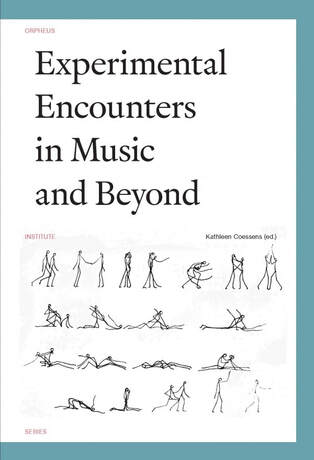EMBODIED COMPOSITION
Treatment and meaning of physical object in experimental music and sound art
book, audio CD, booklet (2011)
Master thesis
Treatment and meaning of physical object in experimental music and sound art
book, audio CD, booklet (2011)
Master thesis
design by Danny Jian Li
|
PHYSICAL OBJECT An object which exists throughout a particular trajectory in space over a particular duration of time. When we speak of corporeal, physical and tangible in relation to music, we refer to something which belongs outside of the musical realm, which is extraneous and opposed to it. For centuries, the main focus of music was pointed towards the sound and all the immaterial constructions which emerge from it - musical form and structure for example, acoustic properties, aesthetic qualities, meaning, etc. On the other hand, aiming for physicality in music appeared most noticeably at the beginning of the XX century, when the problematics of musical medium arose and new means of expression were utilized through appearance of physical objects in music, other than the existing tools of expression such as orchestral instruments and human voice. These objects were brought into musical context from a different one, and their musical function was temporary, unless they would acquire the status of instrument through establishing new and consistent performance practice known to both performer and composer. The same way noise has entered music as non-musical sound and introduced the idea that every sound and silence too, can become musical, objects have erased the thick line between musical and non-musical object with the same intention to prove that any object can become musical too. Objects started to be used for preparation of instruments, as a playing tool, and the sound of the objects from our surrounding, became inspiration for many artists. With possibility of amplification of these sounds, a whole new field of works emerged, and the awareness of listening possibilities grew. John Cage who dedicated most of his work to exploration of the extremely non-musical field and the acceptance of its musicality, said about this: “I never stopped touching things, making them sound and resound, to discover what sounds they could produce. Wherever I went, I always listened to objects." |
Many artists nowadays use objects to play with them in live performance, others sample their sounds and use them in recordings, and some build their own objects which can perform various musical functions in the performance or exhibition context. Today, there exist much more musical objects than definitions and names we can give to them. There is no common practice of how an everyday object can be made into musical one, but there are certainly some methods which appear to be dominant in the practice of experimental musicians and sound artists, and based on them, I have named the following categories of musical objects: Found object, cracked object, symbolic object, sculpture, toy. I've grouped musical objects according to their dominant characteristic that manifests itself in the production of musical meaning. In some cases, it is the origin of an object which is the most relevant, in others it is the transformation which object undertakes to become musical, and some categories tell about the ways musicality of object has been utilized for the artistic purposes. Each category also provides us with information about the degree of musical and non-musical function of an object, telling us how autonomous a musical object is. Making this classification, my goal was to enhance the understanding of prevailing methods of object's manipulation which through extensive and repetitive use in the field of experimental music and sound art can lead to development of certain artistic practices. I was also driven to think about this topic because I found extraordinary the fact that something as abstract and complex as music can be brought into relation with something of absolutely opposite kind such as physical object. I believe that encounter of music with corporeality of things is a reflection of our own personal struggle with comprehension of musical abstractness. It is a way of giving a body to music, a shell which holds the immaterial content of musical thought, and puts it back into the material world where it actually came from. By embodying music into physical form we can make it responsive to our physical existence, and establish a physical interdependence. |
READ: Interview with Pierre Bastien
|
Thesis abstract published by Leonardo Electronic Almanac Presentation at Orpheus Institute for Music Research Lecture at Radar festival, Varna Bulgaria Lecture at SUTRA festival, Museum of Science and Technology, Belgrade Book chapter in Orpheus Institute Series "Experimental Encounters in Music and Beyond" |

